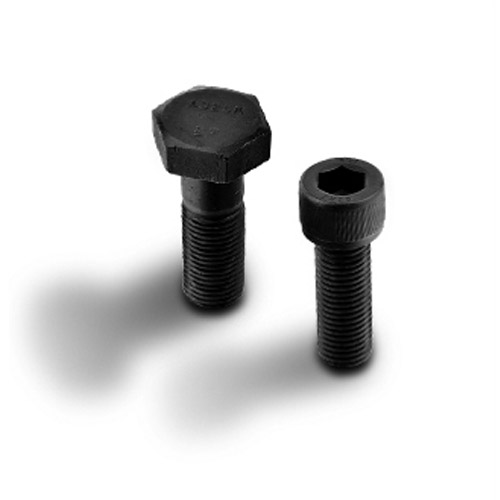

steel column anchor bolts
Dec . 12, 2024 18:19 Back to list
steel column anchor bolts
Steel Column Anchor Bolts Essential Components for Structural Integrity
In modern construction, the strength and stability of structures are paramount. One critical component that ensures the safety and durability of steel structures are anchor bolts. Specifically, steel column anchor bolts play a vital role in securing steel columns to their foundations, providing the necessary connection that binds vertical and horizontal elements together. Understanding their function, types, installation, and maintenance is crucial for engineers and construction professionals.
Understanding Anchor Bolts
Anchor bolts are components used to attach objects or structures to concrete. They are typically embedded in the concrete foundation during construction, providing a strong and stable base for vertical elements like steel columns. These bolts come in various shapes and sizes, and the choice of type depends on the specific requirements of the project, including load capacity, environmental conditions, and design specifications.
Functions of Steel Column Anchor Bolts
The primary function of steel column anchor bolts is to resist the forces acting on a structure. These include vertical loads from the weight of the structure and lateral forces due to wind, earthquakes, or other dynamic loads. By anchoring the steel columns firmly to the foundation, these bolts help distribute loads evenly and prevent tilting, shifting, or failure of the structure.
In addition to load resistance, anchor bolts also provide stability against rotational forces. For example, in the event of an earthquake, the movement of a structure can generate torsional forces that may cause column failure. Properly installed anchor bolts help resist such forces, contributing to the overall resilience of the building.
Types of Anchor Bolts
There are several types of anchor bolts used in steel construction, each with unique characteristics. The most common types include
1. L-Bolts Shaped like an L, these bolts are used to anchor the column in place. The long leg is embedded in the concrete, while the short leg protrudes out to connect the steel column.
2. J-Bolts Similar to L-bolts, but with a curved end resembling the letter J. The curved section helps distribute the load more evenly across the concrete.
3. Straight Bolts These are cylindrical bolts that are inserted into pre-drilled holes in the concrete. They are often secured with nuts and washers, providing flexibility in installation.
steel column anchor bolts

4. Sleeve Anchors These consist of a bolt with an outer sleeve that expands when tightened, securing the bolt within a hole in the concrete. They are effective for applications requiring a secure grip.
5. Epoxy-Coated Bolts Designed for environments prone to corrosion, these bolts have an epoxy coating that provides additional protection against environmental degradation.
Installation Process
The installation of steel column anchor bolts is a critical phase in the construction process. Here’s a general overview of the steps involved
1. Site Preparation The concrete foundation must be properly formed and cured to achieve the required strength before anchor bolts can be installed.
2. Bolt Placement Anchor bolts are positioned according to the structural design specifications. Its correct orientation and alignment are vital to ensure load distribution.
3. Concrete Pouring Once the bolts are in place, concrete is poured around them. It’s essential to vibrate the concrete to eliminate air pockets and ensure a solid bond.
4. Curing After pouring, the concrete needs to cure adequately. The curing time can vary depending on the type of concrete used and environmental conditions.
5. Inspection Before proceeding with the installation of steel columns, an inspection should be conducted to ensure that anchor bolts are accurately positioned and securely set in the cured concrete.
Maintenance and Inspection
Regular maintenance and inspection of steel column anchor bolts are crucial for long-term structural integrity. Over time, factors such as corrosion, loosening due to vibration, or changes in load conditions may compromise the performance of anchor bolts. Therefore, a routine inspection schedule should be established, including checking for signs of wear, rust, or any displacement.
In conclusion, steel column anchor bolts are integral to the safety and durability of steel structures. By understanding their types, functions, and installation processes, construction professionals can ensure that buildings remain stable and secure throughout their operational life. As structures evolve and new challenges arise in the field of engineering, the importance of reliable, well-designed anchor bolts will only continue to grow.
Latest news
-
Hot Dip Galvanized Bolts-About LongZe|High Strength, Corrosion Resistance
NewsJul.30,2025
-
High-Strength Hot Dip Galvanized Bolts - Hebei Longze | Corrosion Resistance, Customization
NewsJul.30,2025
-
Hot Dip Galvanized Bolts-Hebei Longze|Corrosion Resistance&High Strength
NewsJul.30,2025
-
High-Strength Hot-Dip Galvanized Bolts-Hebei Longze|Corrosion Resistance&High Strength
NewsJul.30,2025
-
Hot Dip Galvanized Bolts-Hebei Longze|Corrosion Resistance&High Strength
NewsJul.30,2025
-
Hot Dip Galvanized Bolts - Hebei Longze | Corrosion Resistance, High Strength
NewsJul.30,2025

